If you want to learn Pinterest affiliate marketing…
This post is for you!
Because in this post, I show you step-by-step how to do affiliate marketing on Pinterest in 2024.
Even more:
You’ll also see examples, so you have a blueprint you can follow.
Let’s get started…
What Is Pinterest Affiliate Marketing?
Pinterest affiliate marketing is the process of using “pins” to market affiliate products to users of Pinterest.
When users click your pins and make a purchase, you’ll get a commission for each referred sale.
These sales will come at no extra cost to the customer.
Benefits Of Using Pinterest For Affiliate Marketing
Pinterest gets a lot of traffic.
In fact:
In September of 2022, Pinterest reported the platform had 445 million monthly users.
Up 2 million users from the previous quarter:

Furthermore:
47% of pinners from the United States say they use Pinterest to find or shop for new products:

Based on this data, it’s safe to say Pinterest is a great platform to use for affiliate marketing.
How To Get Started With Pinterest Affiliate Marketing
(A Step By Step Guide For Beginners)
There are different affiliate marketing strategies you can deploy on Pinterest.
Here are the 3 most popular:
Strategy #1: Direct Linking
Direct linking is where you insert an affiliate link directly into a pin.
Then when a user clicks your pin, they’re taken straight to your affiliate offer.
Like this:

This is the easiest and quickest way to promote products on Pinterest.
Because there’s no real “creating” or “work” involved to put this strategy into action.
However:
It’s not a reliable strategy.
And here’s why:
Most affiliate programs require you to have your own website in order to promote products from their network.
Even more:
Most people who click your pins won’t make a purchase right away.
And if most people don’t buy right away, you’ll be promoting products, but hardly making any (if any at all) sales.
But:
If direct linking is the strategy for you, it’s super easy to do.
Simply create a pin, and in the Add A Destination Link section, paste in your affiliate link:
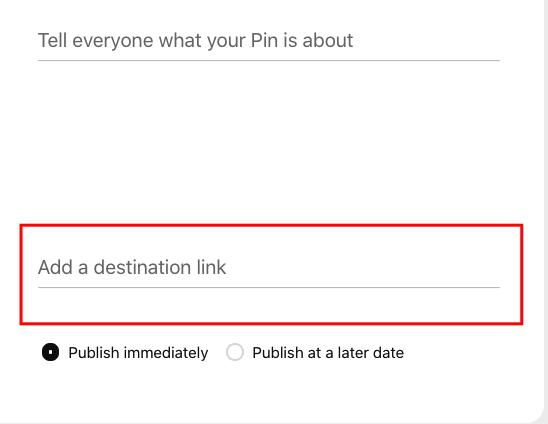
And that’s it.
When users click your pin, they’ll be taken directly to your affiliate offer.
Strategy #2: Blogging
Blogging is a great way to do affiliate marketing on Pinterest.
It’s inexpensive, easy to do, and it has the potential to drive long term profits.
Here’s how it works:
First, you write an affiliate blog post.
Then you promote your blog post on Pinterest.
For example:
I have this post about how to do email marketing as an affiliate:
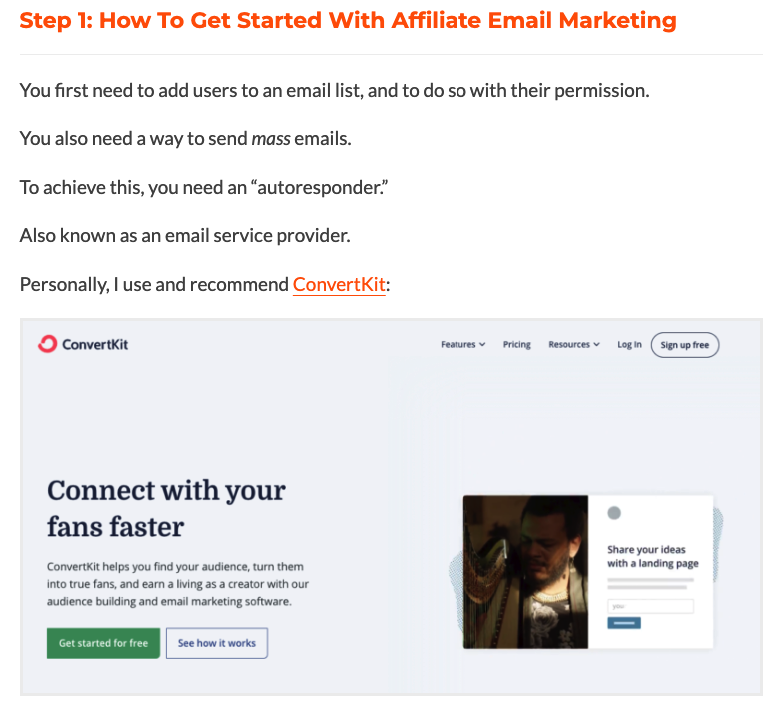
Within that post I’m promoting ConvertKit, an email marketing service I’m an affiliate for.
Then on Pinterest, I have this pin that promotes that blog post:
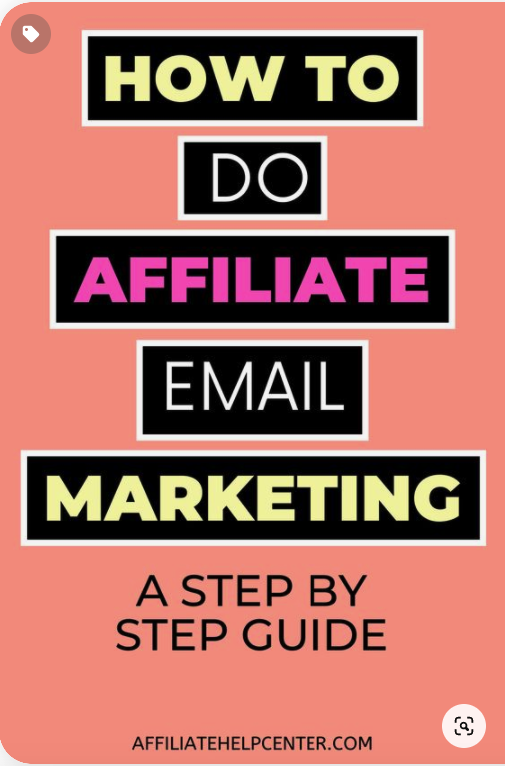
When users click the pin, they’re taken to the blog post where they’ll learn how to do email marketing.
But more than that:
Where they’ll have the opportunity to click my affiliate link and sign up for ConvertKit.
Here’s a birds eye view of this strategy, so you get a better idea on the process:

With blog posts, you can also embed lead magnets within your content so you build an email list.
A “lead magnet” is a free piece of content you offer readers in exchange for their email address.
Here’s an example of a lead magnet:

The lead magnet in this example is a free course.
Strategy #3: Use An Affiliate Marketing Funnel
An “affiliate marketing funnel” is a sales process you send potential customers through to convert them from prospects into leads, and then into customers.
The process itself is a series of web pages and emails:
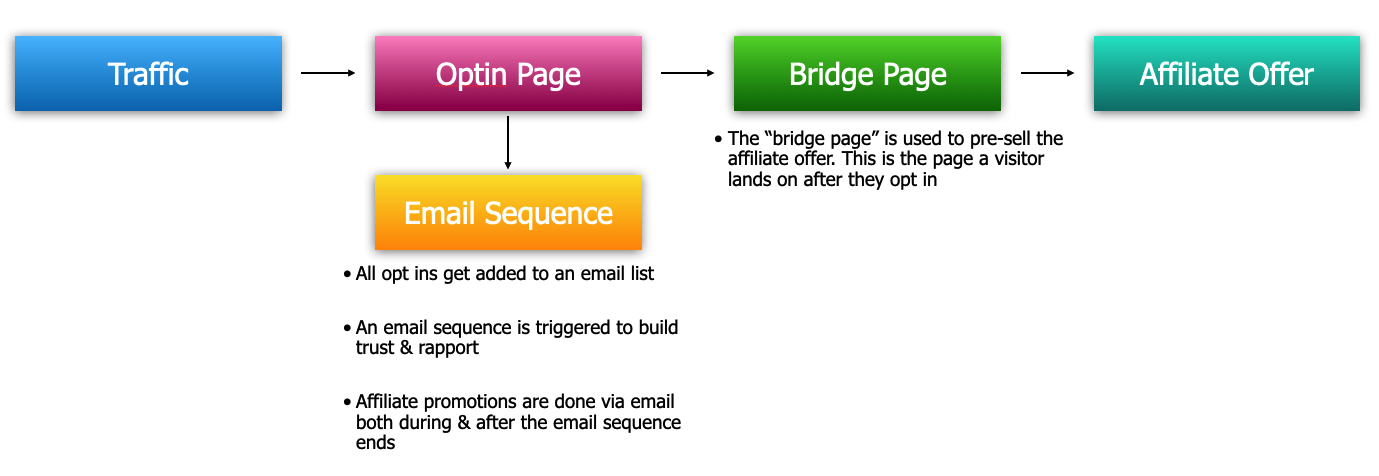
Let’s take a closer look at the steps within the funnel diagram above.
This will give you more insights into each step of the funnel:
Step 1: Traffic
You get traffic from pins you create on Pinterest.
Step 2: Optin Page
You drive that traffic to an optin page.
That optin page should contain some kind of a lead magnet as a “bribe” to acquire an email address.
Step 3: Email Sequence
As people opt in for the lead magnet, their email address is added to an email list.
An email sequence is then triggered to start building trust and rapport with each lead.
Step 4: Bridge Page
This is the page a lead is redirected to after they’ve opted in for the lead magnet.
This page is used to build trust and rapport and to pre-sell the affiliate offer.
Step 5: Affiliate Offer
Where you redirect all leads from the bridge page over to your affiliate offer.
And that sequence of events (that process) is a funnel.
Check out this post which covers how to build an affiliate marketing funnel step-by-step.
Direct linking is a quick and easy way to do affiliate marketing on Pinterest.
However:
It’s not a reliable strategy.
Using blog posts and marketing funnels may take more time to set up, but they’re reliable and will make you way more money.
Pinterest Best Practices
1: Use A Business Account, Not A Personal Account
When you sign up for Pinterest, choose the Create A Business Account option:

With a business account, you’ll get access to Pinterest analytics, so you can see how well your pins are performing.
You won’t get this with a personal account.
2: Use Keywords Throughout Your Profile
Ensure you sprinkle in keywords that are related to your industry throughout your profile.
Specifically:
You want to add keywords into the Display Name and About Your Profile sections:

Why?
Because it helps your audience find your profile when they’re searching on Pinterest.
3: Don’t Use Fancy Fonts In Your Pins
When you use fancy fonts, it makes it difficult to read the text:

If it’s difficult to read, it won’t get read, and it won’t get clicks.
Keep your fonts simple, clean, clear, and easy to read.
Creating clear, easy to read pins can be done easily (and for free) with Canva.
4: Pin Other People’s Content
Of course, most of the content you pin should be your own.
However:
It’s wise to also pin other people’s content.
It’ll give you more content to share, and shows you’re a “good sport.”
Whether it affects your Pinterest rankings or not, I have no idea.
But it can’t hurt to show Pinterest you’re looking out for other pinners.
5: Create Multiple Boards
The more boards you create, the better.
However:
All the boards you create should be related to your industry.
For example:
At the time of this writing, I have 14 boards (adding more each day) all related to affiliate marketing, and online marketing in general:

When you create pins, be sure to add each pin to the appropriate boards.
6: Add Keywords To Board Descriptions
When you create boards, you’ll have the opportunity to edit boards, and add in board descriptions.
For each board you create, add in appropriate keywords to each boards description.
For example:
I have a board titled affiliate marketing tips.
The main keyword for that board is affiliate marketing tips, so I use that keyword within the title and the boards description:

By using keywords in a boards title and description, this helps those boards get discovered in the search results.
7: Create Content People Search For
When you create content for Pinterest, never create what you think people might like.
Instead:
Do keyword research first, so you can see what people are searching for.
Then create content (or promote products) related to what’s being searched for.
8: Create Multiple Versions Of Every Pin
You never want to create just 1 pin for each promotion or piece of content you create.
Instead:
You should create different versions using different hooks, color’s, and images etc.
Why?
By using different versions, you’re essentially testing to see which version will perform the best.
For example, like this:

9: Use Keywords In Your Pin, In The Title, & Pin Description Area
Pinterest relies heavily on keywords.
And 3 of the best places to use keywords is in the pin itself, in the title, and within your pins description.
For example:
I have a pin that links to this post about the best affiliate marketing tools:

The keyword I’m targeting is affiliate marketing tools, which is used in the title, in the pin itself, and in the description:

10: Pin Regularly & Consistently
According to Pinterest, you want to be consistent in your pinning:
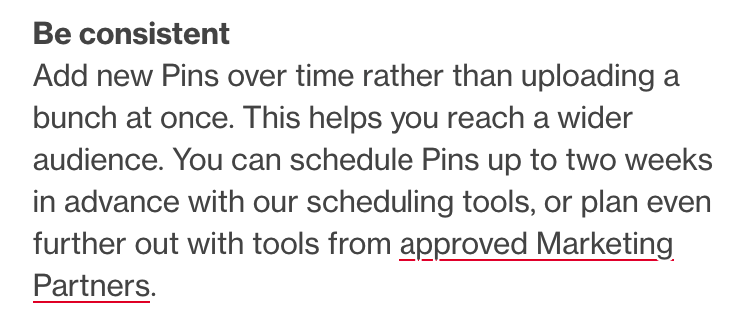
By pinning regularly and consistently, this helps you reach a wider audience.
Ideally, you’ll pin multiple times (at least 5-10+) every day.
This can become quite tedious, and most of the time, you just won’t have the time to get this done.
Thankfully, you can automate this process with a scheduling tool such as Tailwind:
With Tailwind, you can schedule an entire week of pins in about 20 minutes.
Conclusion
And there we are.
How to do affiliate marketing on Pinterest.
Be sure to check out the best affiliate programs for beginners too.
And make sure you don’t fall for any of these affiliate marketing scams.
Now, over to you…
“Are you going to do affiliate marketing on Pinterest?”
Let me know in the comments below.
I’d love to hear from you!
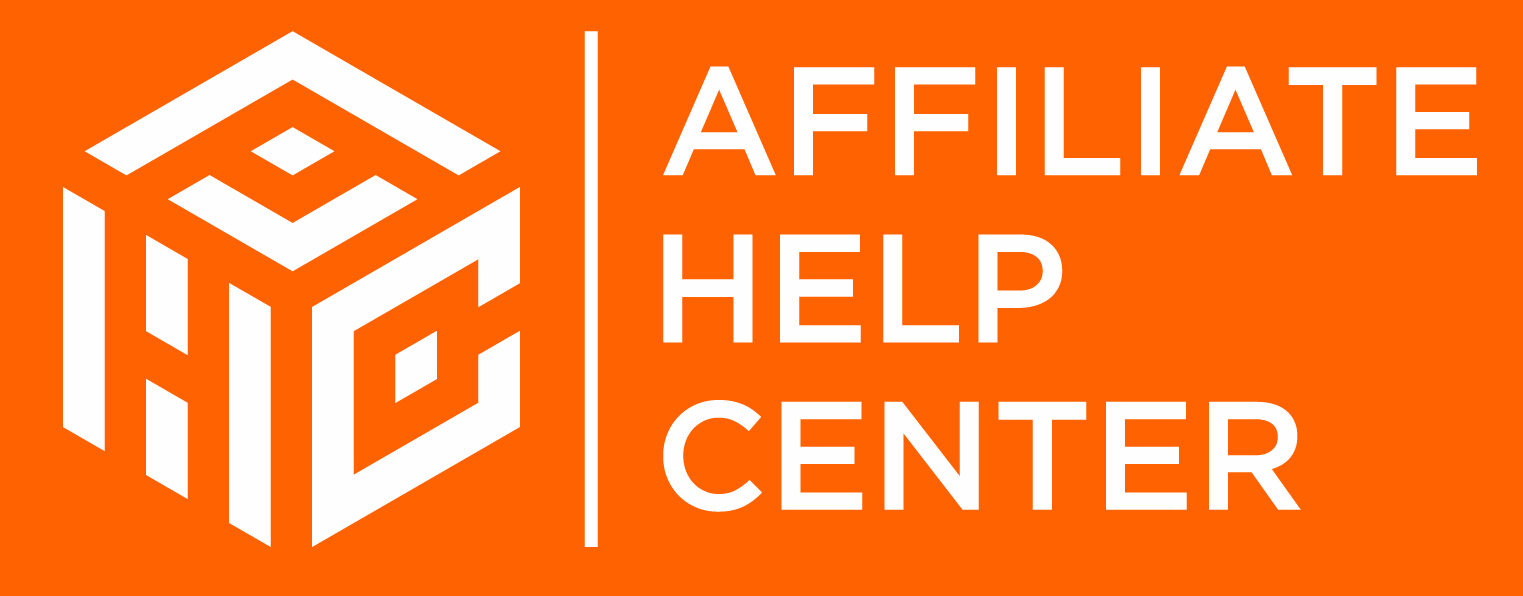

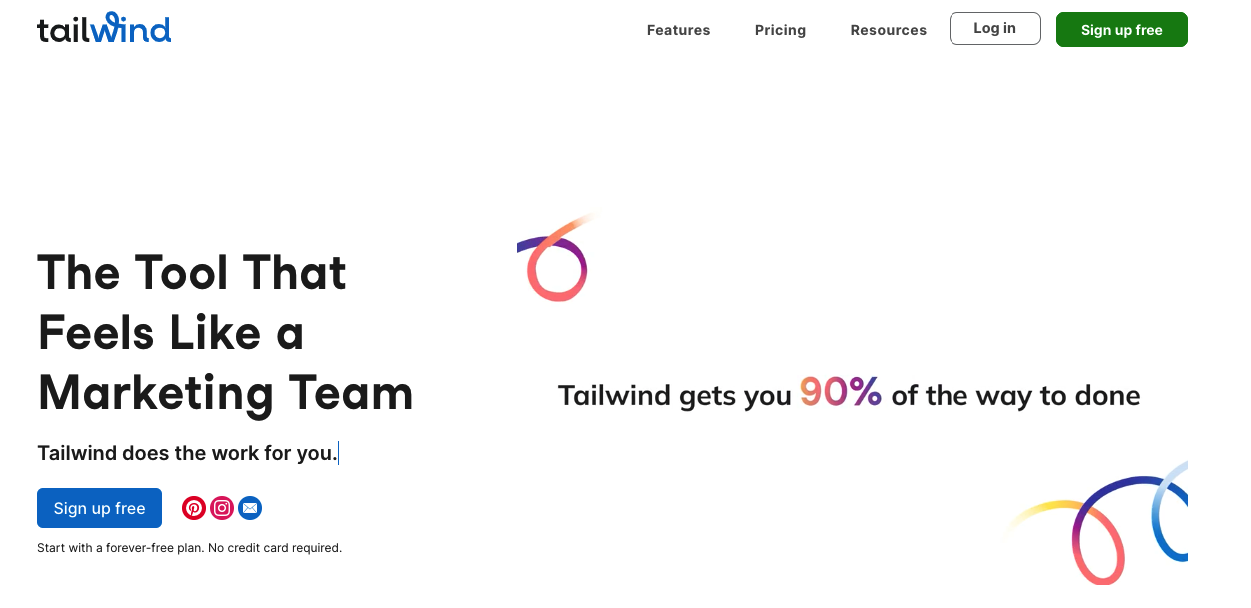



Hi there, great article!
A few questions for you.
Did you tried paid ads on Pinterest?
Is there any spy tool or a report to see what people search on Pinterest?
Thx
Hey Goran,
I have not tried paid ads on Pinterest yet unfortunately.
Although, I plan to run a few paid ads in the next few months.
Cheers,
Josh